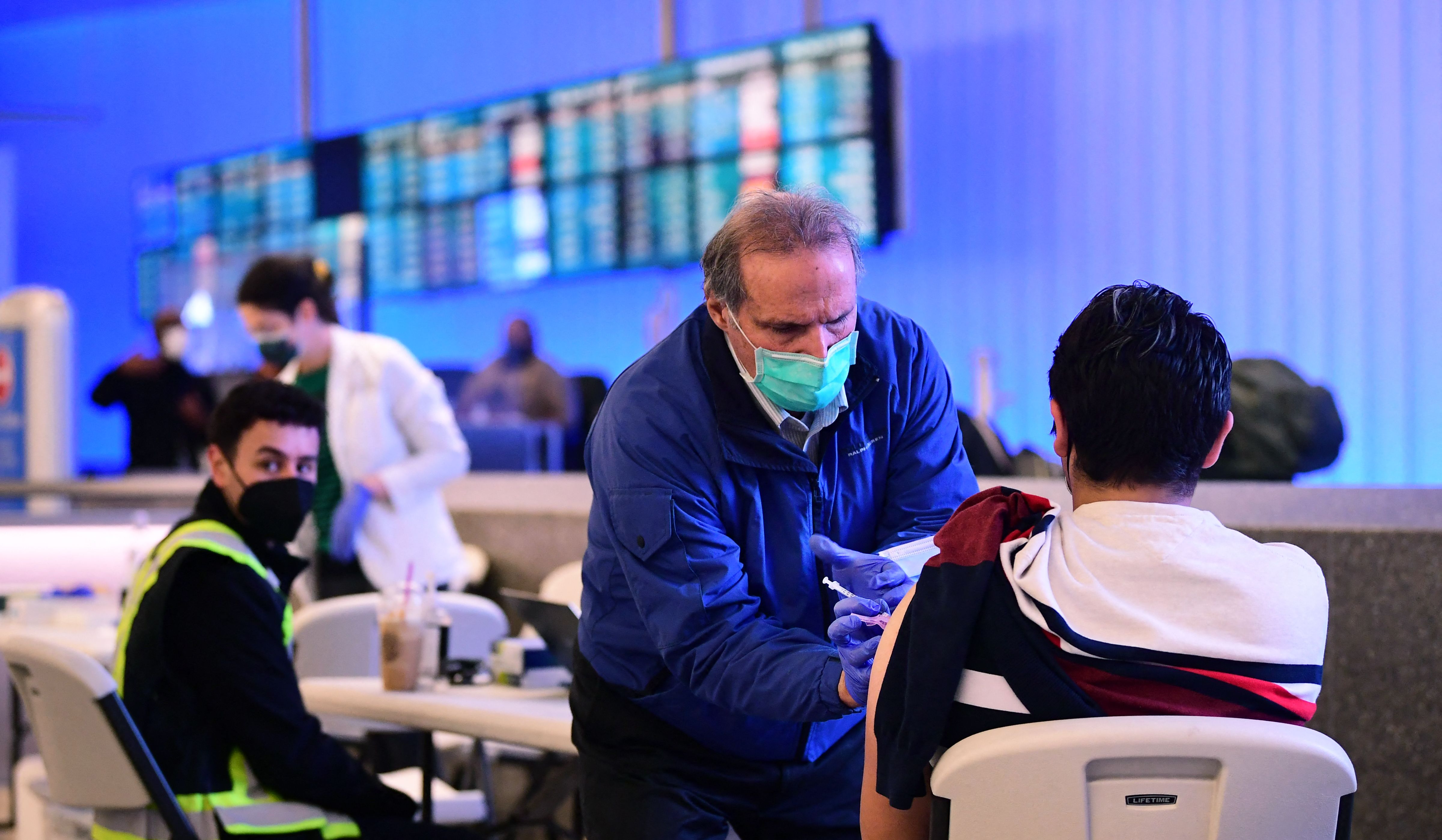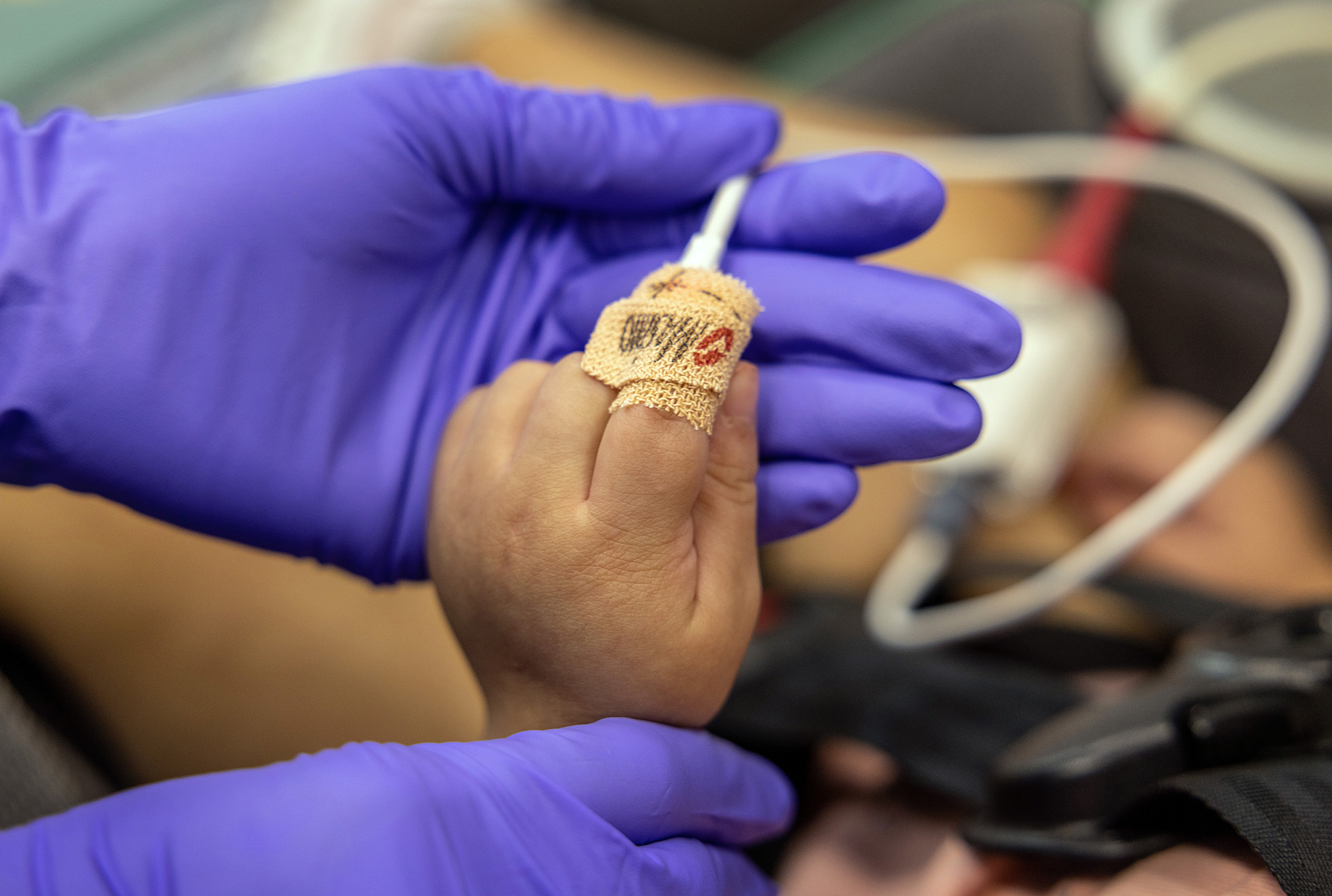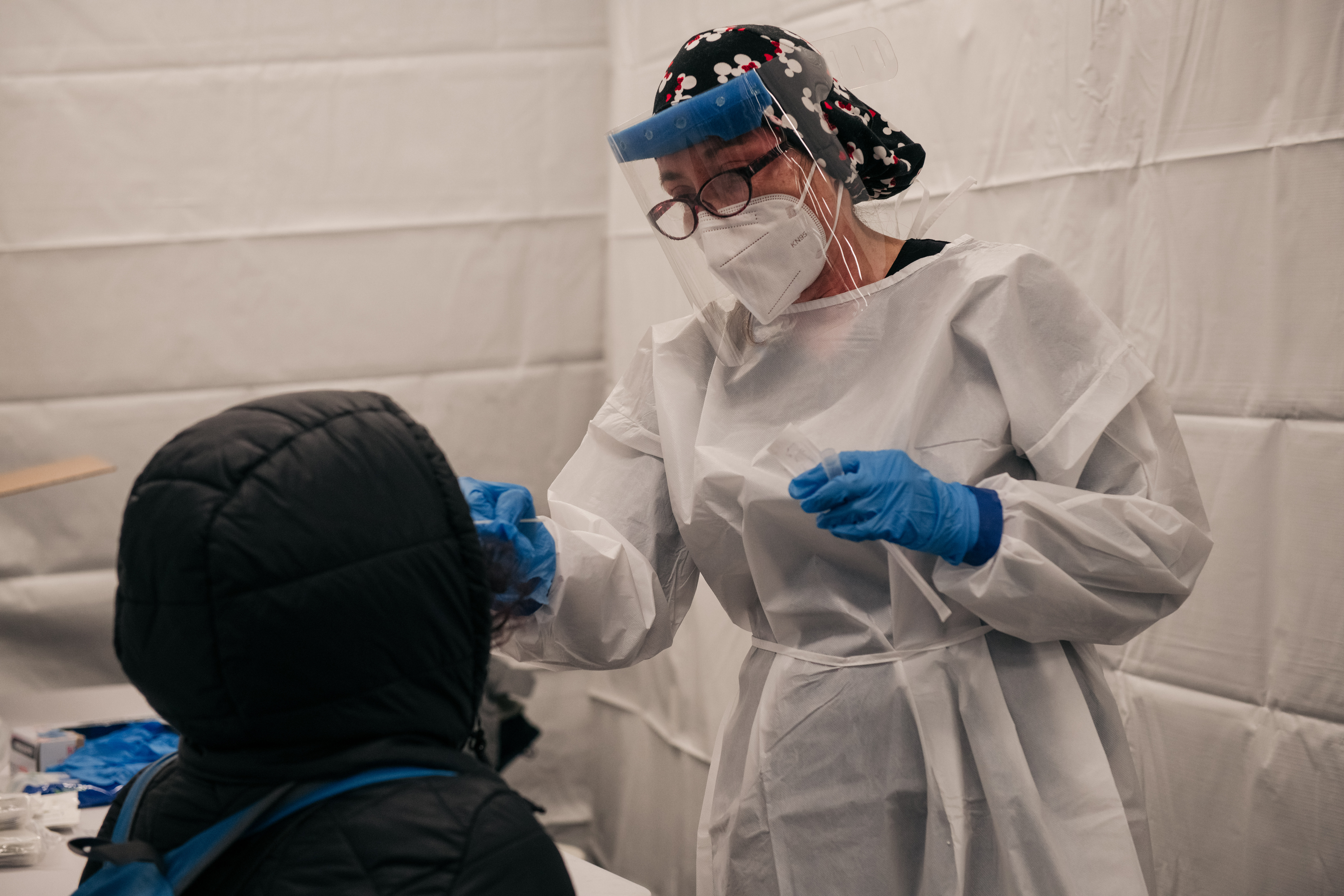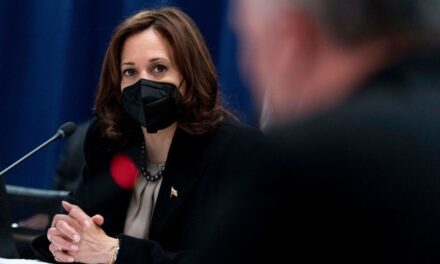
NYC schools plan to reopen as scheduled on Jan. 3

New York City schools plan to reopen as scheduled on Jan. 3 despite rise in cases citywide
From CNN’s Taylor Romine
New York City public schools, the largest public school system in the country, will reopen as planned on Jan. 3 following a winter recess, Mayor Bill de Blasio announced Tuesday.
The city is revamping its Covid-19 testing policies in an attempt to keep more students in school during the latest surge, de Blasio said.
Schools will be provided at-home testing kits for classrooms when a student has tested positive, and students will take two tests per day over seven days, he said. With this new policy, any student who doesn’t have symptoms and tests negative after one day of two rapid tests will return to school the next day, he continued.
The previous policy mandated that fully vaccinated students identified as close contacts did not have to quarantine if they were symptom-free and tested, but unvaccinated students had to quarantine for 10 days or test out.
While he emphasized that New York City schools are some of the safest places in the city, the city will adjust its testing process to catch cases sooner and keep more students in school.
The city will also double the amount of PCR Covid-19 tests they do at schools per week and will include both vaccinated and unvaccinated students, de Blasio said.
New York Gov. Kathy Hochul and New York City Mayor-elect Eric Adams joined Tuesday’s news conference to show support for the adjusted school testing plan.
“We must reopen our city, and we can do that,” Adams said. “And so, you and the governor and I are sending a clear message to New Yorkers, and to this entire country, that we are together to fight this real battle we have. Two clear messages we are saying, loud and clear. Your children are safer in school, the numbers speak for themselves. And we are united to make sure that they will continue to be safe.”
The announcement comes after Hochul said on Monday that two million testing kits, which contain two tests each, are going to New York City schools by Friday. An additional 3 to 3.5 million testing kits are expected to be sent to schools throughout the rest of the state, she said.
CNN’s Elizabeth Stuart and Melanie Schuman contributed reporting.
Covid-19 vaccines help prevent breakthrough infections even in immune-compromised people, study shows
From CNN’s Maggie Fox

Covid-19 vaccines help prevent breakthrough infections even among immune-compromised people such as organ transplant recipients and rheumatoid arthritis patients, researchers reported Tuesday.
But these patients are at higher risk of breakthroughs than other vaccinated people and should take extra precautions, the researchers reported.
Dr. Jing Sun, an epidemiologist at the Johns Hopkins University Bloomberg School of Public Health and colleagues studied the records of 660,000 people who received at least one dose of a coronavirus vaccine through Sept. 16.
“Compared with partial vaccination, full vaccination was associated with a 28% reduced risk for breakthrough infection,” they wrote in a report published in the Journal of the American Medical Association’s JAMA Internal Medicine. “Despite full vaccination, persons with immune dysfunction had substantially higher risk for COVID-19 breakthrough infection than those without such a condition,” they added.
“Overall, the incidence rate for COVID-19 breakthrough infection was 5.0 per 1,000 person-months among fully vaccinated persons but was higher after the Delta variant became the dominant SARS-CoV-2 strain,” they said. Before June, the rate of breakthrough infections was 2.2 per 1,000 people per year. That rose to 7.3 afterward, as Delta spread.
“People with a breakthrough infection after full vaccination were more likely to be older and women. People with HIV infection, rheumatoid arthritis, and solid organ transplant had a higher rate of breakthrough infection,” they wrote.
People with other types of immunocompromising conditions did not have higher rates of breakthrough infections, they found.
Vaccination protected everyone, the researchers reported. But they said those getting immune-suppressing drugs for rheumatoid arthritis or because of organ transplants, as well as HIV patients, should take care to wear masks and avoid situations where they might be exposed.
Dr. Mary Nakamura, an immunologist at the San Francisco VA Health Care System, and rheumatologist Dr. Alfred Kim of Washington University School of Medicine in St. Louis, said the findings should encourage the immune-compromised to get vaccinated and boosted.
“SARS-CoV-2 vaccine clinical trials did not initially include individuals with immune dysfunction conditions, which has led to some hesitancy in using the available vaccines in this population,” they wrote in an accompanying commentary.
“However, several recent retrospective studies have reported reassuring data regarding the safety of these vaccines in immunocompromised patients, and the general consensus is that the potential benefits of vaccination substantially outweigh the risks,” the said.
CDC lowers estimates of Omicron prevalence, saying the variant caused under 60% of Covid-19 cases last week
From CNN’s Michael Nedelman

The Omicron variant caused 58.6% of new coronavirus cases in the US last week, which is significantly lower than previously thought, according to estimates posted Tuesday by the US Centers for Disease Control and Prevention.
Last week, the agency estimated Omicron accounted for 73.2% of cases the week ending Dec. 18.
A CDC spokesperson told CNN last week there was a broad range of uncertainty for those numbers — as low as 34% and as high as 95%. She added agency would “adjust based on additional sequencing.” The agency has adjusted the estimate for that week even lower, from 73.2% to 22.5%.
Over the past four weeks, Omicron has risen rapidly in estimates – accounting for 0.6% of cases ending December 4, to 6.9% the following week, then 22.5% and now 58.6%. The Delta variant makes up nearly all of the rest.
More on the CDC estimates: Not every Covid-19 test is sent for the extra genetic sequencing needed to detect which variant has infected someone. The CDC works off samples and extrapolates its estimates based on that extra testing.
Omicron’s estimated prevalence varies widely based on geography. For example, in the region that includes New York and New Jersey, as well as the region covering Texas and its bordering states, Omicron was estimated to have caused upwards of 86% of cases last week.
Low-cost and easy-to-make Covid-19 vaccine invented by Texas hospital team wins authorization in India
From CNN’s Maggie Fox
A new Covid-19 vaccine designed to be cheap and easy to manufacture has won emergency use authorization in India, Texas Children’s Hospital and the Baylor College of Medicine said Tuesday.
Dr. Peter Hotez, a vaccine specialist and co-director of Texas Children’s Center for Vaccine Development, and co-director Maria Elena Bottazzi, designed the vaccine, and made it using traditional vaccine technology.
The idea is to distribute the technology so developing countries can make the vaccine themselves.
“This announcement is an important first step in vaccinating the world and halting the pandemic. Our vaccine technology offers a path to address an unfolding humanitarian crisis, namely the vulnerability the low- and middle-income countries face against the Delta variant,” Hotez said in a statement.
“Protein-based vaccines have been widely used to prevent many other diseases, have proven safety records, and use economies of scale to achieve low-cost scalability across the world,” Bottazzi said in a statement.
“Our decade-long studies advancing coronavirus vaccine prototypes has led to the creation of this vaccine, which will fill the access gap created by the more expensive, newer vaccine technologies and that today are still not able to be quickly scaled for global production,” she added.
Hotez told CNN’s Poppy Harlow that they were “over the moon this morning” after the authorization was announced by the Indian regulators alongside the vaccine producer partners.
“This is the first Covid vaccine specifically for global health, for the world’s low and middle-income countries. It’s a recombinant vaccine that uses similar technology that makes the Hepatitis B vaccine,” he added.
“They have now 150 million doses ready to go and are now producing 100 million doses a month with plans to produce a billion doses. As of today, our Texas Children’s Center for Vaccine Development at Baylor has equaled or doubled the US government commitment to global health equity. It’s so exciting for us,” Hotez told CNN.
More on the vaccine: The vaccine, called Corbevax, was tested in 3,000 volunteers in two trials, the hospital said. No serious adverse events were seen, the hospital said, and the trials showed people developed an immune response that should be expected to correlate with 90% protection or better against the original coronavirus strain and 80% against the Delta strain for preventing symptomatic illness.
It’s made using a genetically engineered piece of coronavirus grown in yeast, combined with immune-stimulating compounds called adjuvants. It’s been licensed by BCM Ventures, Baylor College of Medicine’s commercialization team, to Biological E. Limited based in Hyderabad, India.
See Bottazzi’s tweet about the vaccine:
Finland announces new Covid-19 restrictions for those entering the country

Finland announced Tuesday it is tightening entry into the country, requiring proof of vaccination against Covid-19 or full recovery from the virus within the past six months.
“Internal border control will be reinstated at Finland’s borders starting on Tuesday 28 December. There will also be other changes to the restrictions on entry, and as of 28 December, the same restrictions will apply to everyone arriving in Finland from abroad,” the Finnish interior ministry said in a news release, adding that the new measures will be implemented until Jan. 16, 2022.
“Internal border control will be reinstated for traffic between Finland and all Schengen countries. In addition, entry restrictions and health security measures will be tightened so that from Tuesday 28 December onwards, all passengers arriving in Finland from abroad will be required to present proof of full vaccination against COVID-19 or proof of recovery from COVID-19 within the past six months, along with a certificate of a negative COVID-19 test taken less than 48 hours prior to arrival,” the statement continued.
At least 78.8% of Finland’s population has been vaccinated against Covid-19 and received at least two doses of the vaccine, according to the Finnish Institute for Health and Welfare.
US is seeing a “very rapid” rise in child hospitalizations from Covid-19, doctor says

Dr. Adrienne Randolph, a pediatric critical care physician at Boston Children’s Hospital, told CNN that children are “one of our most vulnerable populations” for infection from the more transmissible Omicron variant.
“Now with Omicron, it may be more transmissible than Delta, that still has to be shown. But we are seeing a very rapid number of hospitalizations in children, they are one of our most vulnerable populations and have the lowest vaccination rates currently,” Randolph said.
The doctor noted that while the transmissibility of Omicron is part of the problem, the low vaccination rate is driving the increase in the hospitalizations of children as well.
“It is highly, highly contagious and it is spreading very quickly. And the other issue is that even children who are eligible for the vaccine in many areas, the actual vaccinated rate is not that high. So, you know, it varies between 10% and 50% across the United States for even the 12-to 18-year-olds… and then the 5 to 11s, you know, some states it is less than 6% have taken the opportunity to get vaccinated. And these children who are getting admitted … are either not vaccinated, or they have underlying medical conditions that puts them at risk,” she said.
The doctor offered parents advice, including urging them to get vaccinated and boosted because “if they get sick, they can’t take care of the children who get sick.”
“Most of these healthy children are going to do fine, have a mild illness. It is supportive care. Also they need to try to isolate them as best you can to keep others from getting infected because children are contagious when they have the virus as much as adults, so it is important to prevent the spread further,” Randolph said.
“But most healthy children will do fine with Covid, and have a mild cold. And some don’t have any symptoms at all,” she added.
Here’s what we know about children and Covid-19 hospitalizations: Nearly 2,000 children across the US right now are hospitalized with confirmed or suspected Covid-19 cases. That is up from around 700 just last month. In New York City, pediatric hospital admissions have jumped nearly five-fold over a three-week period.
In Washington, DC, nearly half of Covid-19 tests at Children’s National Hospital are coming back positive. In Chicago, hospitalizations have quadrupled over the past week.
Is it Covid-19 or a cold? A doctor explains how to tell the difference

While Covid-19 cases are sharply rising across the US, the winter season is also a time for the common cold. Symptoms for the two can certainly look the same — sore throat, runny nose, cough and headache, among others.
Dr. Abdul El-Sayed gives guidance to people trying to figure out if they have been infected and need to get tested or if they just have a cold.
If you were exposed to someone with Covid-19, “it increases the probability” that you may have the virus too, El-Sayed said.
Here’s what to pay attention to:
“Even though with Omicron, it’s less likely that you’re going to lose your sense of smell or sense of taste, those are really specific for Covid-19,” he said.
Another common symptom with Omicron is a headache, El-Sayed added.
If you have those symptoms, “it’s worth isolating yourself and getting a couple of tests,” he said. “Don’t test immediately after you might have been exposed. Once you’re getting symptoms, you want to test one day, and then test again the next day just to be sure as you’re isolating.”
Watch CNN’s interview with the doctor here.
Your top questions about the new CDC Covid-19 isolation guidelines, answered
From CNN’s Holly Yan

CNN readers from around the world have asked more than 150,000 questions (and counting) about coronavirus. We’re reading as many as we can and answering some of the most popular questions here.
The US Centers for Disease Control and Prevention’s new isolation guidelines have sparked new questions about how to follow the measures and safely plan for New Year’s Eve events.
Here are answers to some key questions:
Q: What should I do if I test positive for Covid-19? How long do I need to isolate?
A: “Given what we currently know about COVID-19 and the Omicron variant, CDC is shortening the recommended time for isolation from 10 days for people with COVID-19 to 5 days, if asymptomatic, followed by 5 days of wearing a mask when around others,” the US Centers for Disease Control and Prevention said in a Dec. 27 update.
The update did not explicitly say how long infected people who still had symptoms need to isolate. The CDC has previously said people with symptomatic Covid-19 should isolate for 10 days.
“To calculate your 10 full day isolation period, day 0 is your first day of symptoms,” the CDC said Dec. 9. “Day 1 is the first full day after your symptoms developed.”
The decision to reduce isolation times for those who are asymptomatic after 5 days was motivated by research showing the majority of Covid-19 spread “occurs early in the course of illness, generally in the 1-2 days prior to onset of symptoms and the 2-3 days after,” the CDC said Dec. 27.
“Therefore, people who test positive should isolate for 5 days and, if asymptomatic at that time, they may leave isolation if they can continue to mask for 5 days to minimize the risk of infecting others.”
Q: What should I do if I was recently exposed to someone who now has Covid-19? How long do I have to quarantine?
A: It depends on whether you’re fully vaccinated and boosted, the CDC says.
Those who have received a booster shot “do not need to quarantine following an exposure, but should wear a mask for 10 days after the exposure,” the CDC said in a Dec. 27 update.
“For people who are unvaccinated or are more than six months out from their second mRNA dose (or more than 2 months after the J&J vaccine) and not yet boosted, CDC now recommends quarantine for 5 days followed by strict mask use for an additional 5 days,” the CDC said.
“Alternatively, if a 5-day quarantine is not feasible, it is imperative that an exposed person wear a well-fitting mask at all times when around others for 10 days after exposure.”
For anyone who was exposed to someone with Covid-19, it’s a good idea to get tested 5 days after exposure, the CDC said.
“If symptoms occur, individuals should immediately quarantine until a negative test confirms symptoms are not attributable to COVID-19,” the CDC said.
Read the full Q&A here.
Pediatric hospitalizations are up in the US as Omicron variant spreads
From CNN’s Maggie Fox and Jen Christensen
A five-fold increase in pediatric admissions in New York City this month. Close to double the numbers admitted in Washington, DC. And nationwide, on average, pediatric hospitalizations are up 35% in just the past week.
The highly transmissible Omicron variant is teaming up with the busy holiday season to infect more children across the United States than ever before, and children’s hospitals are bracing for it to get even worse.
“I think we are going to see more numbers now than we have ever seen,” Dr. Stanley Spinner, who is chief medical officer and vice president at Texas Children’s Pediatrics & Urgent Care in Houston, told CNN.
“Cases are continuing to rise between Christmas gatherings and we’re going to continue to see more numbers this week from that,” Spinner said in a telephone interview.
“Now we’re going to have New Year’s on top of that this coming weekend, with more people getting together — more exposures and then those numbers will continue to climb,” he added.
Across the country, pediatricians are bracing for a busy January.
“It’s almost like you can see the train coming down the track and you’re just hoping it doesn’t go off the rails,” Dr. Claudia Hoyen, director of pediatric infection control at UH Rainbow Babies and Children’s Hospital in Cleveland told CNN.
“It’s going to be a very interesting couple of weeks. We’ve just had all of these kids mixing together with everybody else during Christmas. We have one more holiday to get through with New Year’s, and then we’ll be sending everybody back to school,” Hoyen said.
“Everybody is kind of waiting on the edge, wondering what we’ll end up seeing.”
And while the Delta variant infected more children than previous variants, Omicron is looking even worse, Spinner said.
Read more about the rise in pediatric hospitalizations here.
Source: https://www.cnn.com/world/live-news/omicron-variant-coronavirus-news-12-28-21/h_032ffbaf6ab046f61df0fa5ce4c86893


















